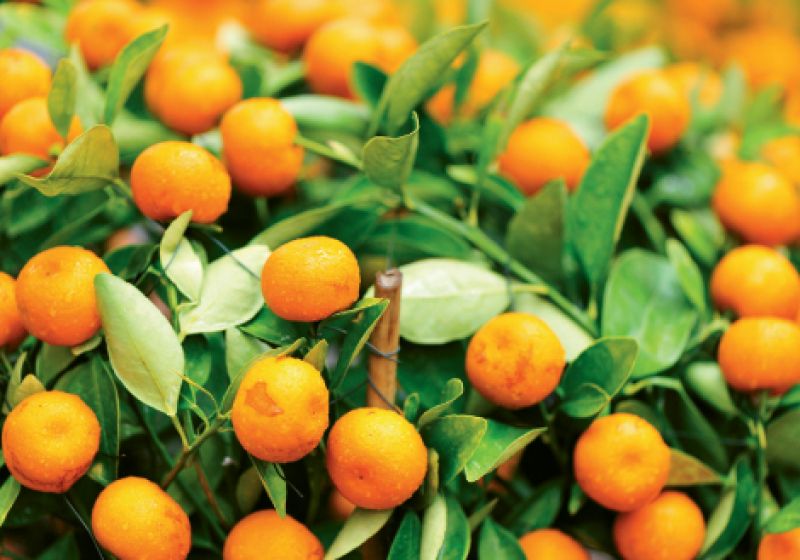
Long considered the little gem among citrus, the kumquat is a forgiving tree that’s easy to grow in the Lowcountry. It loves our hot summers and can tolerate our cooler winter temperatures while still providing a high yield of fruit whether planted in the ground or a pot. The slow-growing shrub or tree bears small, brilliant orange globes in late fall to winter but is visually rewarding year round. Starting in late spring, its fragrant white flowers are showcased by a backdrop of shiny deep green foliage. In the summer, the immature green fruit can be tucked into floral arrangements. By late fall, when the deliciously sweet and sour citrus can be harvested, its list of uses is endless. Try kumquats in chutneys, marmalades, and even cocktails. (Note: Don’t peel this fruit. That’s the sweet part, and the pulp is the sour.) But remember to save a few branches to adorn your home for the holidays in wreaths, centerpieces, and swags.
In the spring, plant the trees directly in the ground or in a container in full sun. The kumquat’s flexibility makes it an excellent specimen plant: it can be used for a bonsai, trained into a standard (bare trunk topped with a ball of foliage), or espaliered on a garden wall as a focal point. Try these popular varieties:
Nagami (Fortunella margarita)
Native to southern China, this oval kumquat is the most common variety in the U.S., and its intensely sweet and sour fruit is frequently sold in local markets. It blooms in late spring, and the fruit ripens in the fall. But beware, it typically has sharp thorns.
Meiwa (Fortunella crassifolia)
Also known as “sweet kumquat,” this tree can grow from two to four feet in a container and up to 15 feet when planted in the ground. It delivers white blooms from mid-summer to early fall. Come early winter, its round fruit offers up its signature sweeter flavor perfect for enjoying right off the branch.
Changshou Kumquat (Fortunella obovata)
Known as the “Fukushu” kumquat in Japan, this smaller, thornless hybrid is less commonly seen, but its unusual oversize pear-shaped fruit makes it worth seeking out. It has a juicy pulp and thinner, sweet peel than most kumquats. Plant outside in Zones 8 or higher. It’s also an excellent selection for a container.